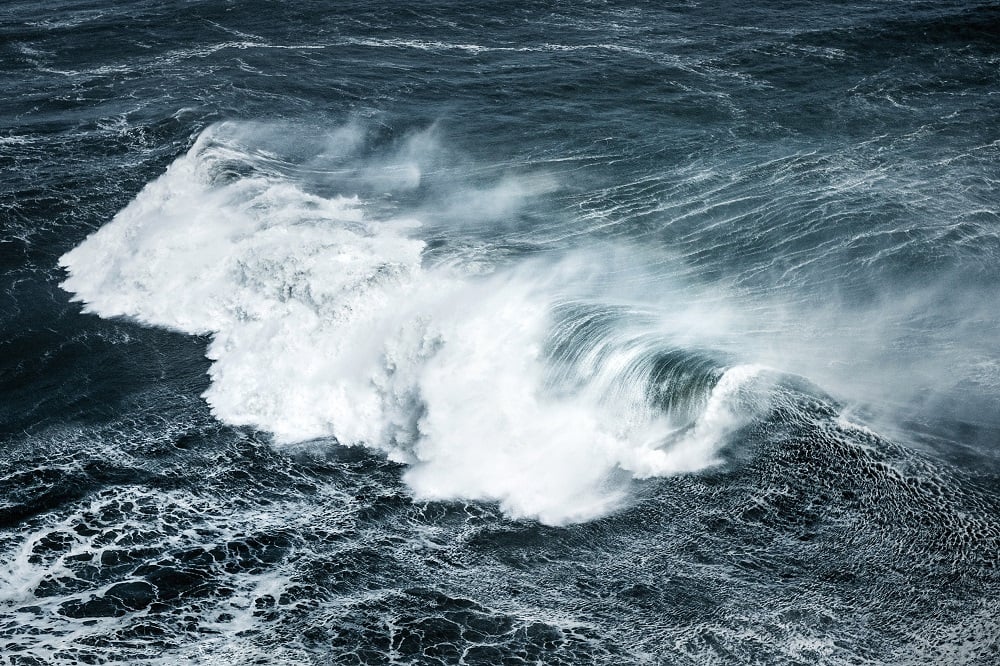The history of the tide clock
The evolution of an emblematic seaside measuring instrument
Tides have always influenced and punctuated the life of coastal populations for whom seas and oceans represent food sources and trade. Today, the ocean and seaside have also become relaxing and leisure places which keep attracting more and more people. For centuries, understanding and forecasting tides had become foremost issues that led to the creation of measuring instruments. Find out in this article how the tide clock was born and how this clock has evolved through time.
The tide clock’s early days
In the 17th century, Great Britain was a great maritime power that wanted to improve the shipping of goods on its rivers, like the Thames which happens to be the main axis used by merchant ships.
It is at the heart of London that seafaring was the most perilous, especially around London Bridge. The Thames flows into the North Sea, only 56 miles away from the capital, and therefore it is subject to the tide phenomenon. Depending on the hours, the passage through London Bridge was often impossible for ships.
It is in this context that many scientists and clockmakers got interested in the tide phenomenon and the creation of tools that could indicate the times of low and high tides.
Afterwards, maritime information, like high-tide times, started to be integrated onto clock faces in the 1640s. It matches the first calendars that showed tide-related data.
A British clockmaker, Thomas Tompion, imagined in 1670 a clock that could not only show the time, Moon phases and calendar information, but could also provide a rather new indication: the time of high tides at London Bridge, one of the first tide clock uk. An invention which allowed the Brits to know the ideal time slot to ease the ships’ journey on the Thames.
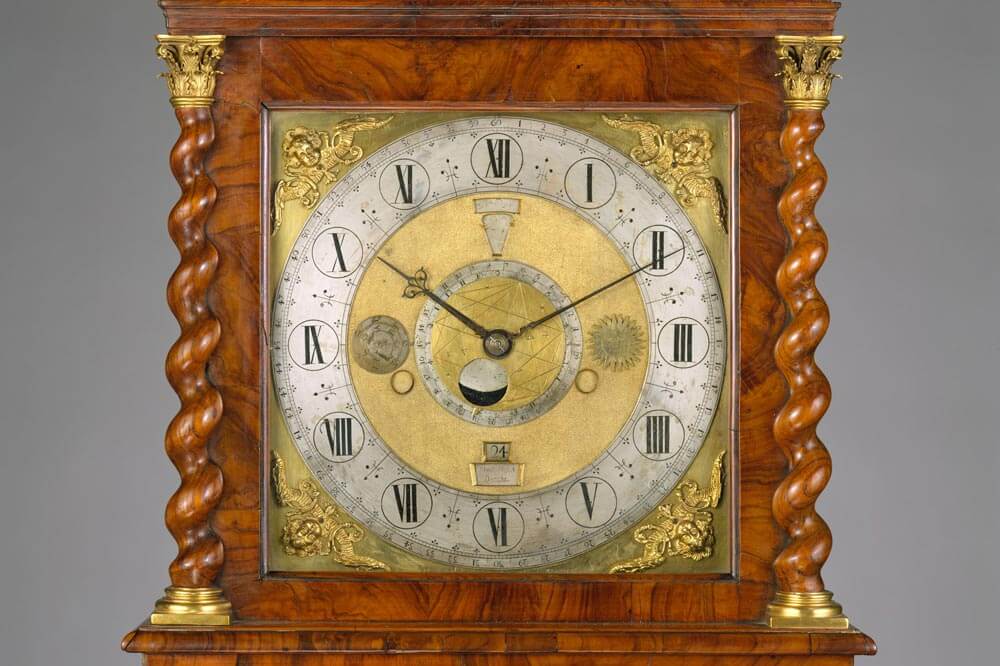
© Met Museum
A few centuries and mechanical performances later, the tide indicator is no longer limited to the famous English river.
The evolution of tide times forecasts
Even if the observation of tidal movements was documented as soon as in Antiquity, it is really the 17th and 18th centuries that are remembered for the strong interest of scientists in understanding this maritime phenomenon.
The enthusiasm of the scientific community around the matter of tides enabled to improve the forecasting techniques and make them universal. Therefore, calculating their times will take a whole new dimension and spread to all ports subject to this phenomenon, thanks to the collaboration of scientists.
It is in 1687 that the great British mathematician and physicist, Isaac Newton, explained that tides are influenced by the gravitational pull of both the Sun and Moon on the Earth. Following these works, Pierre-Simon de Laplace, another mathematician, French this time, developed in 1800 more elaborate mathematical tools to analyse tides. The first tide table for French coasts was created by Chazallon, a French hydrographer.
Thanks to mathematical advances, the first tide-forecasting machine was created in 1872-1873 by William Thomson, known as Lord Kelvin. It is the start of accurate forecasting of tide times throughout the world.
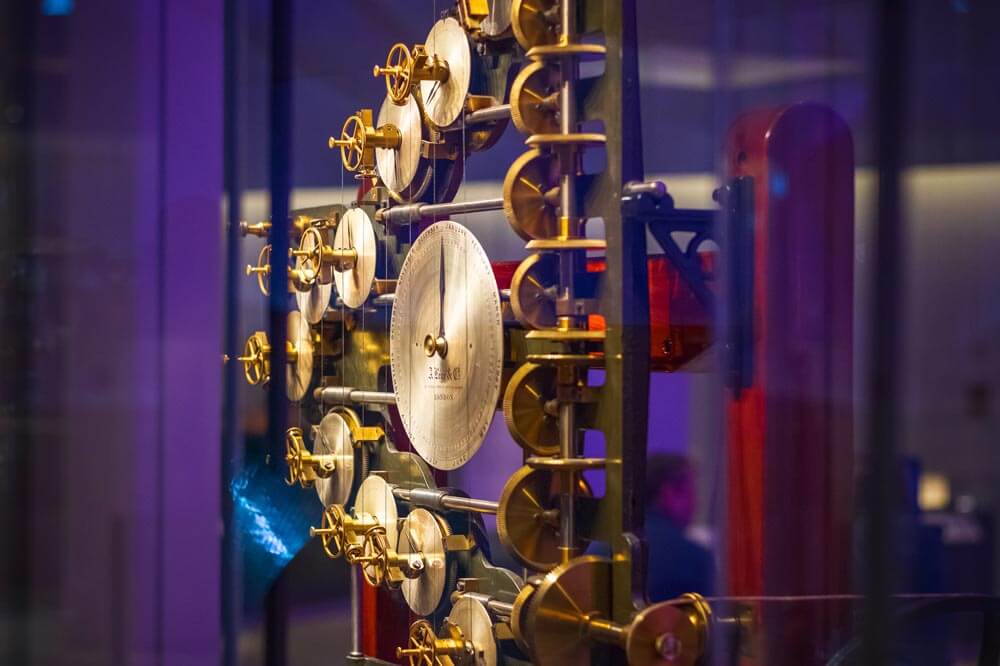
© IWei - stock.adobe.com
These machines that had been used by oceanographers for a long time will then be replaced progressively in the 1960s by the advent of computers.
The tide clock, century after century
So, it is in the 17th century that clockmakers incorporated the measurement of the tide cycle into their creations.
At the beginning, we could see data related to high tide times on the astronomical clocks of some seaside towns. Those clocks with much information are complex to make and read: time, date, sun and moon’s phases, religious holidays, constellations, high tide time…
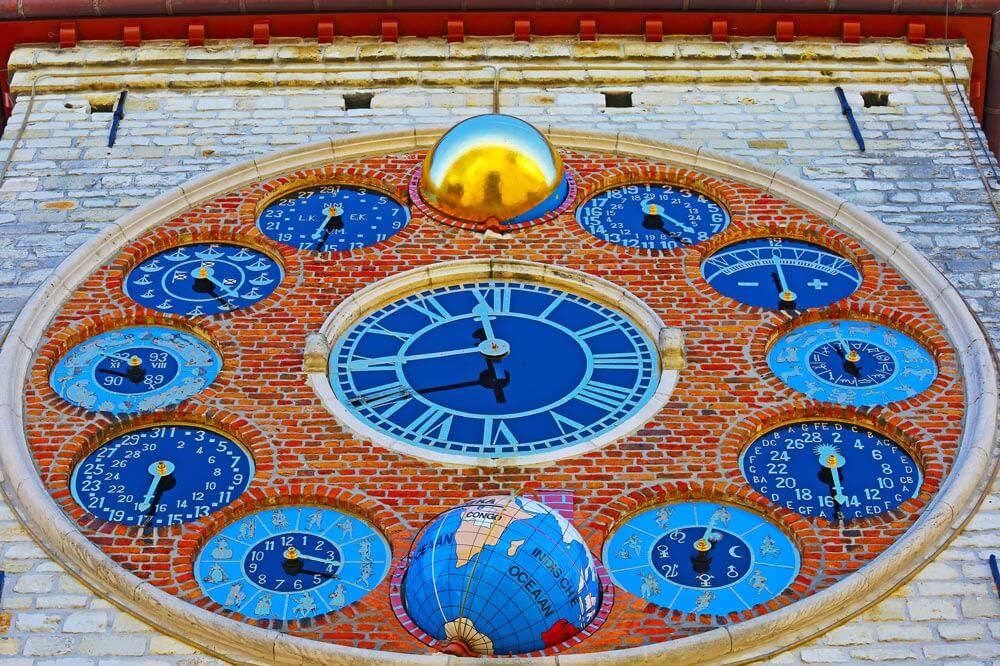
© Ralf - stock.adobe.com
Throughout the years, the tide phenomenon has been measured more and more accurately and new measuring instruments have been developed, like tide clocks. In 1890, the first tide gauge watch was commercialised by a Swiss clockmaker.
These tide clocks or watches aim at showing the tide state at a given place, they function thanks to a mechanism of 12 hours 25 minutes and 14 seconds, half a lunar day (that is to say the average time between two high or low tides). After having set one’s instrument on the tide time of his/her port of reference, everyone can then know, at a glance, the time remaining before high or low tide.
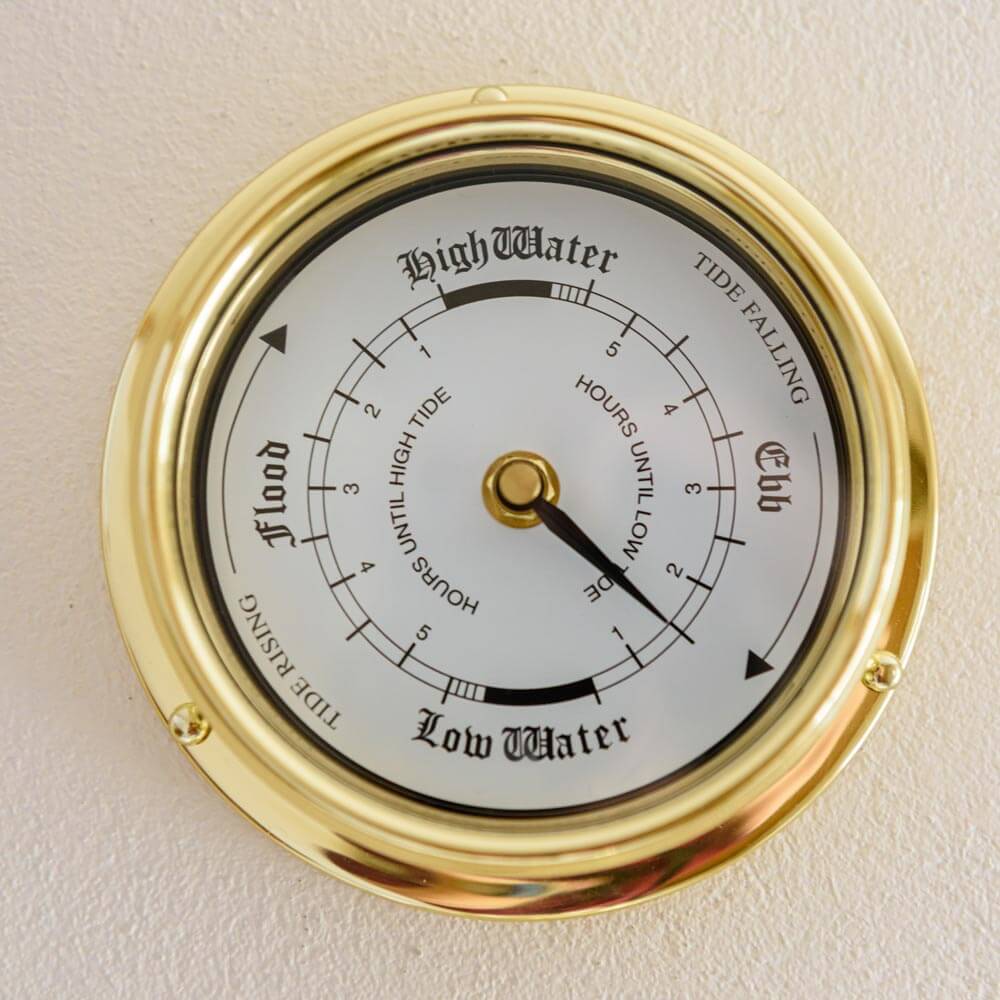
These new less costly instruments allow many seaside dwellers to check, from their home, the tidal movements in ports and coastal areas so that they can plan their activities accordingly.
For many years, the tide clock had been present in the everyday life of fishermen, seafarers, surfers or walkers but no major breakthrough had taken place.
It is only very recently that the tide clock has been popularised and has become a must-have object for the house, thanks to a totally reimagined design. In 2015, in Hossegor within The Landes, Stéphanie and James got the idea of updating this emblematic object of the seaside that has always been in Stéphanie’s parents’ house.
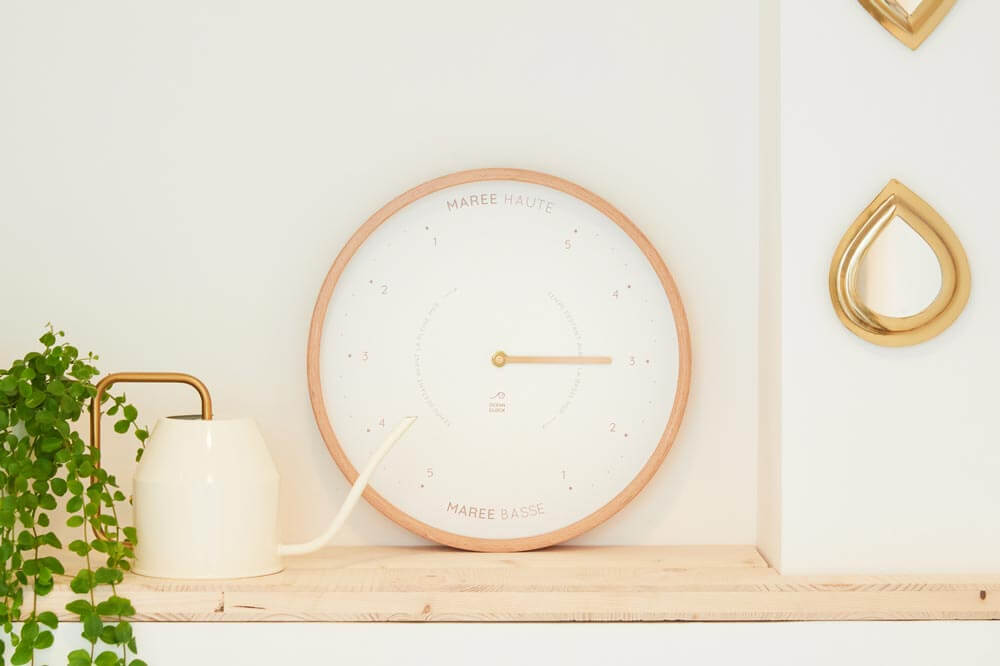
We are done with the usual nautical look! More than just a measuring instrument, the tide clock, signed Ocean Clock, is a stylish decoration accessory. It is now found in modern interiors thanks to a refined face, a more imposing diameter and a very modern wood frame. The functioning of its mechanism is based on the rather accurate technique developed for several centuries by famous mathematicians.
Even if today electronics tend to replace old time measuring tools, the decorative aspect of the tide clock, its customisable hand as well as its ease of use make it an ally for ocean and decoration enthusiasts.

